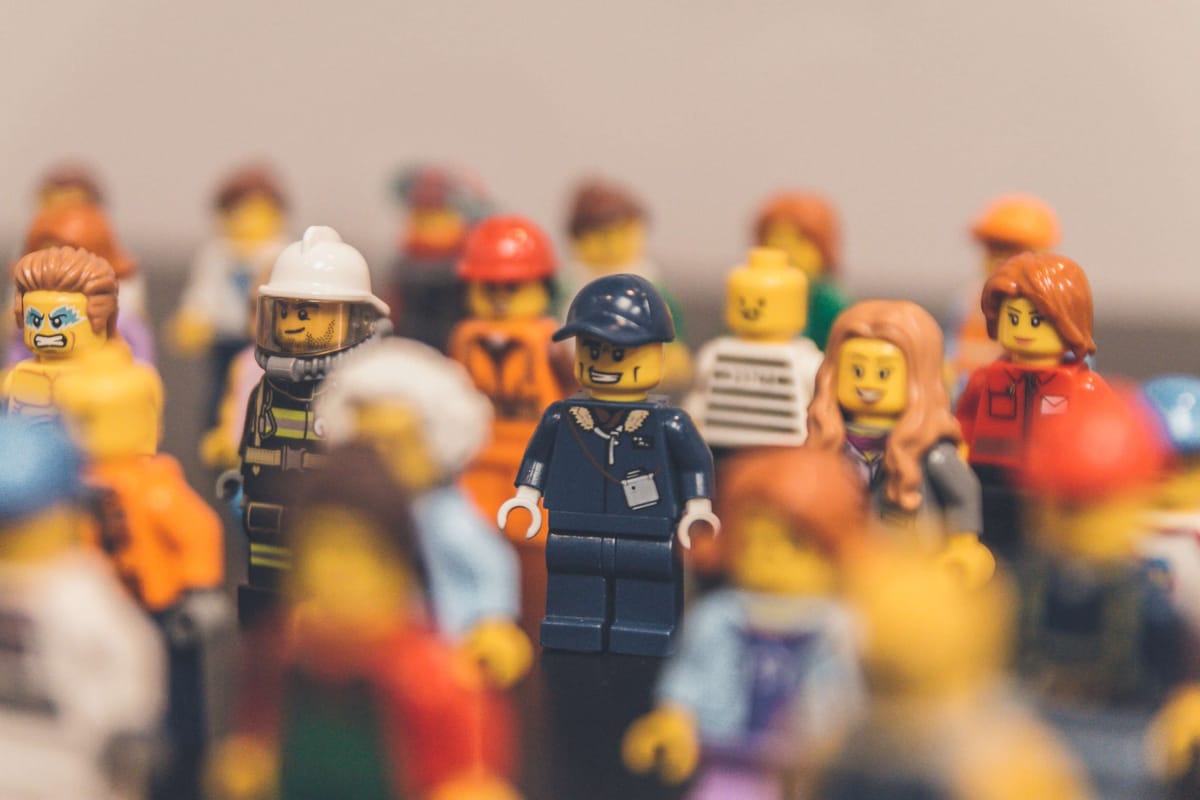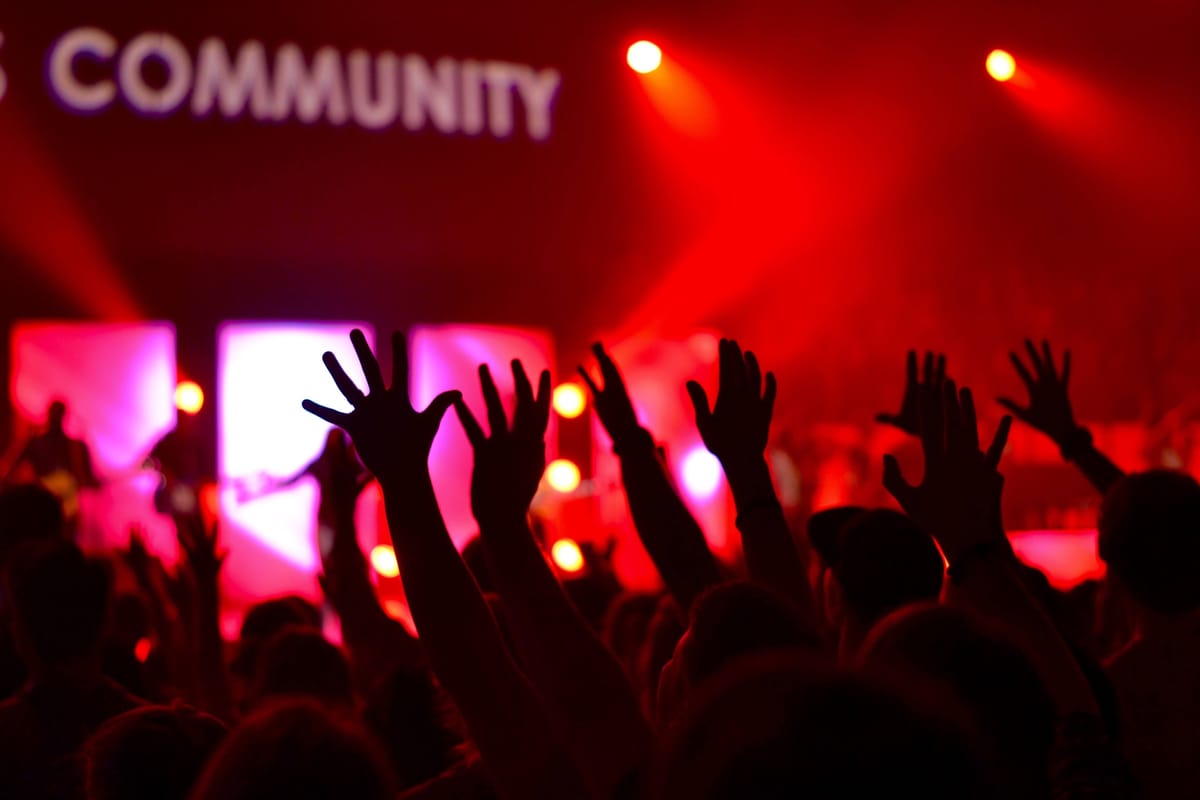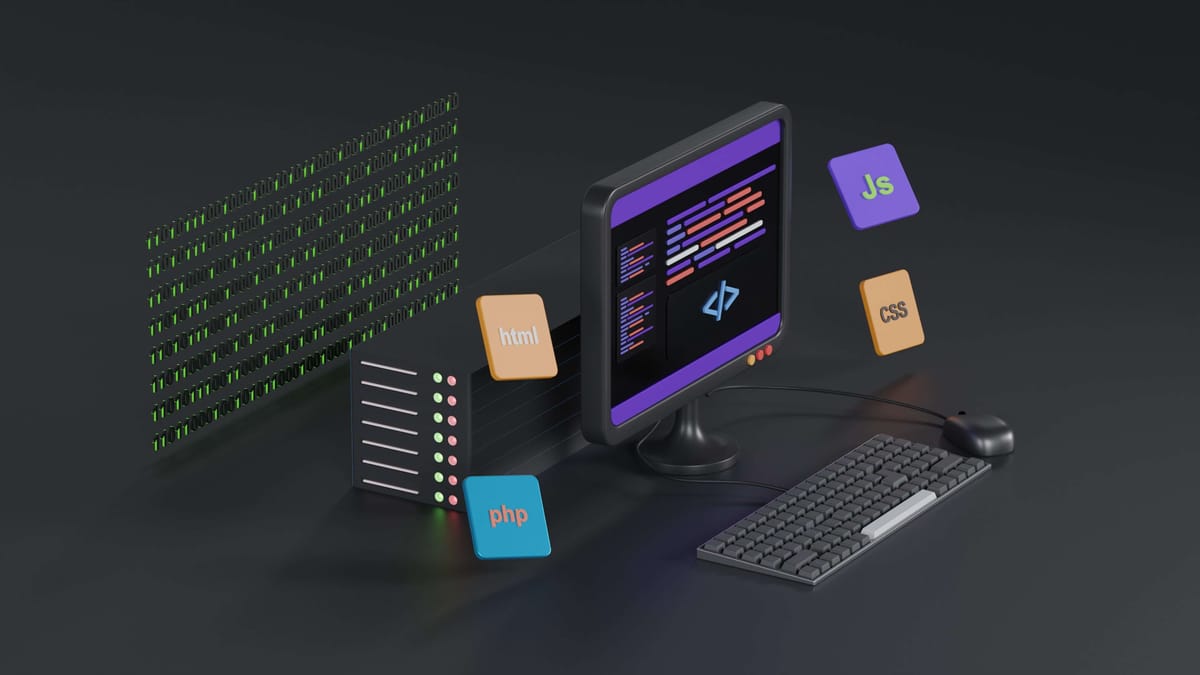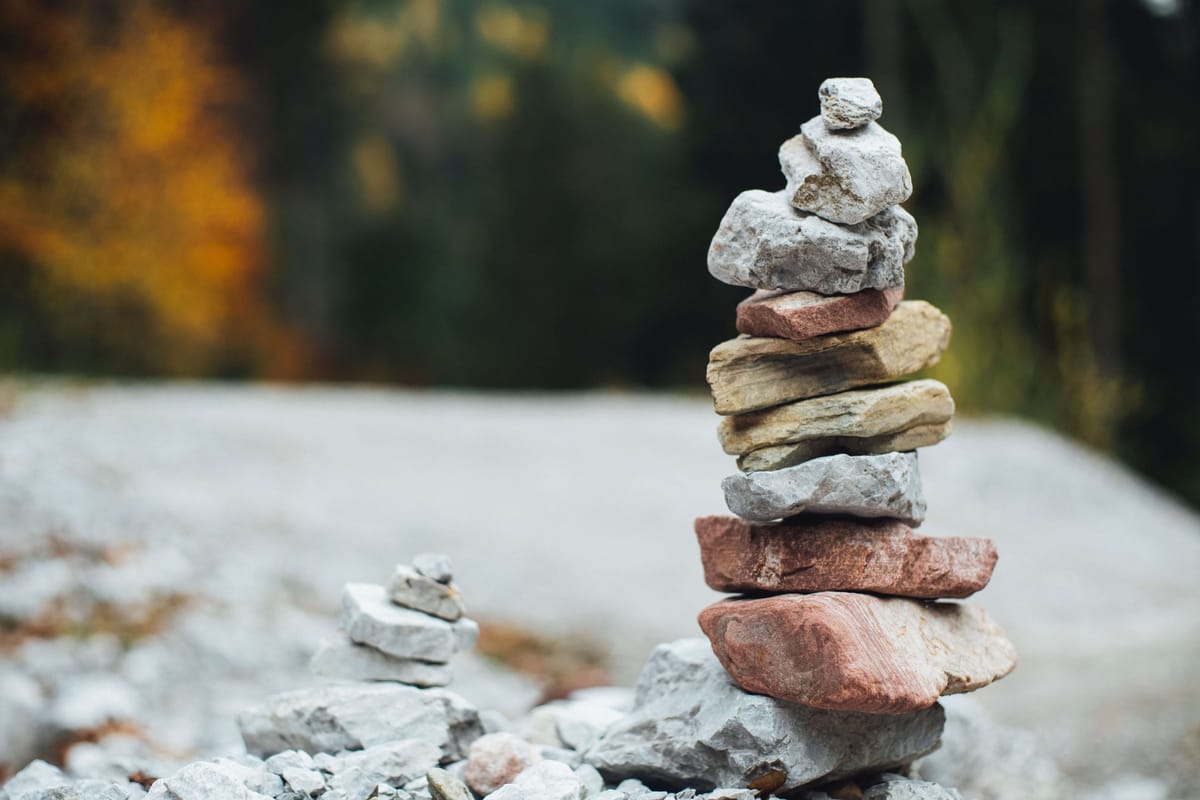Something that’s often overlooked in the tech world is the humans aspect of community building.
About three years ago, I wanted to do more video creation. I liked the idea of presenting content in this modality, but I was really nervous about it and I couldn't figure out why.
Thankfully, I came across a group that was hosted by a live-streaming company called Lita, live every day in April, that helped me and many others get over those hurdles of being nervous in front of the camera and talking to other people that you can't see and can't gauge their reactions.
I did this program for about a month, and it's turned into a lasting friendship with so many different people. And it really makes me think, what is community? How do we build that community?
Examining the difference between ‘community’ and ‘Community’
I wanted to start with the word ‘community.’ What's the difference between ‘Community’ and ‘community?’ And why is that difference so critical for us?
Oftentimes, we find ourselves using them interchangeably in sentences and when we're typing and presenting, but they're not the same thing. They're similar, but they’re almost two sides of the same coin, and that difference is crucial to being better community builders and community engagers.
Let's start with the lowercase c, ‘community.’ This refers to a group of people with a shared or common interest, the genuine relationship people build with one another, whether it's technology, content creation, live streaming, Dungeons and Dragons, etc.
Whatever your thing happens to be, that's a community. People who share a common interest or a set of goals.
What we often see is the capital c, ‘Community,’ which is the tools, methodologies, and frameworks, all these things that we as community management teams and leaders use to cultivate the lowercase c.
These are things that we use to bring people together, whether it's events, webinars, workshops, artifacts that we create on our sites, Discord and Slack, tools that we all use to bring people together to talk with one another and build their own relationships.
It's not about us at the end of the day, it's about them. So let's dive in a bit more into community, those people out there that we want to foster relationships with, those relationships that we as individuals build on our own, and as community builders we encourage amongst people.
Communities are crucial to people’s lives and social impact because humans are social creatures by nature. Emotionally, psychologically, and professionally we thrive on working with and being around other people.
Now, everyone does this differently. We’ve found that in this post-pandemic world, virtual and hybrid work very well, but there's still a time and place where we want to be around those people who connect us and support us in whatever our interests happen to be.
I'll give you a couple of examples.
Recently, I attended a conference in Boston, Massachusetts, and there was a Creator Camp all about creating content. It was formed on the summer camp idea that we have here in the States, where you have a group of people who work together on common goals, we go to classes together, we learn with each other, and we support each other.
It was such a beautiful experience because I’d met many of these people in person, but there were just as many that I’d never met before. I'd only followed them online, and getting to build real relationships with them in person to support one another was beautiful.
Earlier, I mentioned Dungeons and Dragons. I have several friends who play D&D and I have one group of friends that does it in person and another group that does it completely online. It's allowing them to connect with each other, whether or not they can be around physically or they're spread across the globe. It's really easy to use tools to do all of that.
My wife has been part of a book club for a while now, and she loves to participate. It's about the books a little bit, but it's just as much about her and her friends getting together to spend some time with each other.
Now that we're talking about this, the distinction between these might become a lot more clear to you. Tools like Discord and Slack channels are all ways to connect people together and talk with each other both online and offline.
Tools such as Bevy, Cvent, Socio, and all these others out there that allow us to host virtual and in-person meetups, workshops, and webinars are great examples of tools that bring people together and give them a common experience.
The thing I want to reinforce though that is those are tools and frameworks. At the end of the day, they're just tools. Tools can be replaced and swapped out at any given time. The intent of all of these frameworks and tools and things that we use needs to be about fostering relationships among people. At the end of the day, it’s all about people.
So, how do these two different forms of the word and description actually interact with each other?
You guessed it, the needs of the community. The people should dictate the evolution of your Community tools as you learn more about them. It’s how they want to interact, how they want to provide feedback, and the types of content they want to engage with you on that can start to dictate how you use your tools and what tools you use.
We constantly need to ask ourselves, are these tools truly serving our community members? Or are we just following trends?
We also need to be aware of the pitfalls of relying too heavily on tools without considering the human aspect. Remember, behind every tool and platform is a heartbeat, a human story waiting to be nurtured and told.
As community leaders, it’s our responsibility to set the tone for the community and our employees. Lead by example and foster a positive, inclusive, and engaging environment for all your members.

How to bridge the gap between ‘community’ and ‘Community’
In order to bridge the gap between community and Community, we need to do a few different things.
- Identify the needs of your community
- Translate those needs into actionable strategies
- Work with your team to empower and execute those strategies
Make sure to leave some room for spontaneous community-driven ideas because at the end of the day, these people have great ideas and they're going to give you feedback. Use those to adapt the strategies you're building and have built.
Continuously seek feedback and adapt to the changing needs of your community. People will come in, people will go, and people will stay. It's going to change and evolve over time and you need to keep up with the pulse of what they need, what their sentiment is, and what they're asking you for.
Empowering your team to take ownership of their own experiences with the community is crucial. It not only helps with the workload distribution, but it also fosters a sense of belonging and ownership within the team.
Remember that your team members who help you manage your community and provide solid constructs for your community members to use are also people, and they have great ideas.
Also, remember that the people in your community and your team all work and behave and operate in their lives in different ways. They all follow a rhythm. I don't like to think of this as a balance because it's never just one thing or another. That's too binary. People aren't binary.
Things change and flow over time. Sometimes they're really engaged or not as engaged, but there are a lot of reasons why that might be the case.
Try not to overthink it too much. If you find some people not engaging as much, maybe it's because your tools or strategies are hindering them or not encouraging them. It could just as well be that their own lives have changed and they have different needs.
So, having a sense of what's going on in your community can help you formulate the right strategies with the right tools to support and enable them without overrotating and trying to compensate for something that isn't up to you to compensate for.

Ecamm: A case study in building a successful community
Next, I'd like to provide you with a case study of what I think is a really successful community initiative that epitomizes the synergy between Community and community.
Ecamm is a piece of software for recording video, live streaming content, providing meeting experiences with clients and your team, and hosting webinars. It's designed to improve those things and make them really engaging and interesting.
I happen to be a member of the Ecamm community, and I find it really amazing. And I want to talk a bit about why that is.
Ecamm as a product is just a piece of software. That's all it is. So why would I and others have such an emotional feeling toward it?
They’ve done a wonderful job in not just listening to their customers' feedback about what they need in the tool to make it a better experience for their use, but they’ve also created a community space. They gave people something they wanted that brought out emotions and needs those people have and want to be better at doing.
From my experience, what Ecamm has done over some other open-source type of software has enabled people to have a place to go and get technical support, and it makes things easier. It makes the interface and the work easier, which allows us to create really engaging content to help our audiences and our communities feel more a part of it.
They leverage tools such as Discord for general conversation about topics, upcoming things, and support. They also have a Facebook group, not only for general support, but you can ask anybody who works for Ecamm, as well as anyone in the community, a question and everyone jumps in to help.
The people who use this software use it for their businesses, whether it's to teach people how to do better meetings or to run their own businesses and create video content on their own.
Many people are trainers. They train the trainer and teach other people how to use the software to better do their own work. It's a myriad of personality types and business needs that they have. You can engage with all of those people on Facebook and Discord.
As I mentioned earlier, they even hosted a camp recently called the Creator Camp, and it was fantastic. Even though this is about a piece of software and there’s a small team that runs this company, the 70-80 people that were there to interact were all interacting with one another. People flew in from multiple countries all across the globe just to be together with each other and help and support each other.
That’s an example of a group that creates a space where the community can come in, and then the community just runs with it and makes it beautiful.

Key strategies for effective community building
Now that we have a better understanding of the differences between community and Community, here are a few things to keep in mind as you're building your community programs and using these tools.
Listening and feedback mechanisms are critical to make sure your community members know that they have a way to express their voices, opinions, and suggestions to you for the future of the tool, the product, or whatever services you want to put together for them.
Being inclusive, making your content accessible, and making the community accessible to anybody who wants to be a part of it. All people are different people. We want to be inclusive to allow anybody from any background and any experience type to be a part of our community and receive the value that they can from other people.
Encourage learning and growth within your community by providing access to resources and opportunities for members to develop their own skills.
Avoid common mistakes because it's just that easy. It’s possible to over-automate something and try to make a process or an engagement so simple that you actually end up making it more complicated. So there's a fine line there.
There can be a lack of a personal touch, where too much comes out from your brand as opposed to the people in your company and in your group interacting, so other people in the community feel like they’re having a real connection with others.
Ignoring diversity. People are diverse, and it doesn't just mean in the typical sense of how people physically look and where they come from. It also means diversity of thought and backgrounds and cultures and how that adjusts how people use their language when they're talking. All of that matters, so you need to think about that.
Keeping your community informed about changes, updates, and decisions in a clear and consistent manner is key to them feeling like they're connected to something real.
Community is all about people coming together. Facilitate opportunities for members to collaborate, connect with each other, and build relationships with one another. That's why they’re there.
And definitely make sure to show your appreciation for community members by recognizing their contributions and celebrating their achievements. That can help foster a strong sense of belonging and motivation within every community member.
All of these things are done to support the people in your community. It’s all about the people and the human elements that they bring to the table. You're doing this for them.
Yes, you might be a sales organization or a service provider and you want them to consume those things and purchase them. But at the end of the day, if you can make them feel like real people connecting with other real people, building relationships, and being empowered to be themselves and drive their own goals, they're going to be much more willing to engage with your products and services and stay with you for a long time.
It's not superficial. This isn’t convincing somebody of something different. It's allowing them to have a space where they can feel included and trusted and they belong with others.
Answering frequently asked questions about community building
I'm sure there are a lot of questions. Everyone has tons of questions. I still have lots of questions because these are people and people change and they're new, and we learn things about them.
Here are a few questions that I've come across, and I'm going to try to help shed some light on them. Hopefully, this will help you too.
What's the most important factor in building a strong community?
There are probably a ton of answers to this question, but the one I’ll always come back to is people. The people in your community are what make your community strong.
Always prioritize the needs and well-being of your community members before anything else that you try to do with them or engage with them.
How do you handle conflicts?
This one is a toughy. Many people out there, including myself, aren’t really comfortable just diving straight into conflicts when they come up. But they do come up because we're people. It happens.
So how do you handle those conflicts?
At the end of the day, open communication can help with everything, along with active listening. Listening not just to the words that someone is saying, but the way that they're saying it, what the situation is surrounding it, and trying to put it together.
Be the person who can help see the bigger picture and try to understand why people are struggling to communicate with each other which is creating some kind of conflict.
Oftentimes, it’s not that one person is upset with the other person, it's often because they're not able to communicate effectively with one another. You can help aid that by seeing what's going on and trying to assist, or in some cases, pulling that conflict out of the main conversation thread in whatever forum it exists in and trying to resolve it separately from that.
It's important to have clear guidelines and protocols in place to do exactly this.

How do you maintain a rhythm between promoting your brand and fostering a genuine community?
This is a question that has come up a few times for me. I'm also working through it myself to try to get a better sense of how to balance this.
People generally don't like to know they're being sold to. They don't like to be sold to. But oftentimes, people are okay with hearing those messages if it's part of genuine community building and helps them be successful in what they're doing.
So, how do you create a rhythm between the promotion of either your personal brand as an entrepreneur, a self-employed entrepreneur, a startup, or a large company like I work for?
Remember that the focus should always be on building relationships and providing value. If you can work within those two things, and there's a lot of room to work, you can do both of these activities. You can foster a beneficial community while also showing those community members the value of what your company or your brand has for them.
It doesn't always have to be a sales pitch, but you can provide content, assets, and engaging events that show people the value of using these things to further their own personal goals.
You always need to make it about them, because it is about them. It's not about you as the company or the business owner, it's about the people in your community and what their needs are. How can you make them successful, almost to a fanatical degree?
How do you measure the success of a community?
This question is the one that we all get as community leaders, and we're always trying to figure out the most effective way to answer that question.

I think the spirit of this is probably more about how you measure the success of a community program.
Some of the more common data-based metrics you can use to measure the success of your community or your community program would be things like the number of active users you have, how much conversation and engagement on social media, comments, DMs, and things like that.
If you have a customer satisfaction score such as NPS, that's a good way to measure things in many cases. Are you getting new customers (if that's important to your community lifecycle)?
There are a number of different data-based things that you can report on.
Remember that it's not just about the numbers. Engagement, satisfaction, and impact on members' lives should also be considered. At the end of the day, you’re trying to improve upon the people who are members of your community, while also bringing them to your ecosystem, the products and services you sell, and the way you engage them.
It's a symbiotic relationship where you work together on these things. It’s not just a funnel that you bring them to a conclusion.
So, this is something you should always remember when you're deciding how best to measure your success in your community program and your community’s health.

How do you prevent burnout in community leaders?
Burnout is one of the toughest things to lead through as a team manager. So how do you help prevent burnout from occurring amongst your team of community leaders?
An analogy for this is when you're on an airplane, you put your oxygen mask on first before the person next to you. While that might be an extreme example, it's a way to describe that we as leaders of a community program need to take care of ourselves first before we can help those in our charge, our community members.
It's really difficult to foster an inclusive, safe, and healthy environment for community members if we don't have the mental capacity and the energy to be able to do our jobs effectively.
One of the things you can do as a leader is to prioritize self-care for you and your team members. Things like delegating tasks to others when it's appropriate and meeting with your team on a regular basis to see how they're doing. Ask them how they're doing and what help they might need. Do they have too much on their plate? Is it becoming a struggle for them?
You can help them prioritize where they put their time and energy and really prioritize yourself and figure out what things we’re doing that maybe we don't need to focus on as a team today. We can do it sometime in the future instead.
There are only so many hours in the day, and you don't want your people to have to think about burning all of that time just to try to get all these magical things completed as a team and for your community.
Think about balancing those out. What stuff will have the biggest impact in the short term, so your people can feel like real people and enjoy their lives, and then come into work and help everyone in the community be successful?
You need people on your team, as well as in your community, to have their own strong and healthy support system. And the best way to do that is to have an open communication channel between them and their leader, between yourself or others so that you're all aware of what's going on and you can properly set expectations for your team members.
It’s important to apply this to yourself and up the chain so people know what’s reasonable to expect now, tomorrow, in two months, etc., as you try to accomplish those things for your strategy.

Cultivate meaningful connections and a sense of belonging
I want to leave you with a reminder to go beyond just building Communities with the capital c, using the tools and methodologies. You're here to create and foster meaningful connections between the people in your community one-to-one, one-to-many, etc.
You're also here to foster a sense of belonging. Help them feel a part of something.
In the case study that I gave earlier of Ecamm, I felt amazing as a person being at this event. I'm actually going to be talking with their marketing director soon to learn about how they went about fostering and creating an impactful community space for people to be a part of.
These are people I talk to on a regular basis to learn how to do what I want to do with video and other content better so my community can engage with us. And it's not the business owners I'm going to, it's the other community members.
At the end of the day, creating connections and fostering belonging is what truly matters. As I mentioned earlier, these are all tools and they're very useful. You need these tools in order to implement the strategy that you want to implement so that you and your organization can be successful.
Ultimately, it's about the people in your community. No matter what tools you use, at any point, allow yourself the freedom to say, “Maybe this thing isn't working for us anymore.” Or, “Maybe there's a different way to approach this, so we can put something aside.”
I realize that money can be tight, so investing doesn't always mean the money you spend, but the time and energy you use to onboard a new tool or a new practice. It can be hard to let go of that, even if you know that it's the right thing to do to move into something else. Give yourself the space to realize it's okay. They’re sunk costs.
Once you've invested in a tool or a process, you've tried it, you've worked with it, and if it's working, fantastic. Go to a point where you can try to iterate and evolve that, but if it's still not doing what you need, it's okay. You can let that go and move into something else.
We all have to do it. Just like the people in our communities who adapt and change with the world, we need to do the same thing for those people as well.
Really try to focus on creating meaningful connections and fostering a sense of belonging for all of your community members because that's why they’re there.
Just like that Ecamm example I gave earlier, these people who liked this product and software are all great, but they're there to help one another. It's not about the company, it's about them and the other people in this group because at the end of the day, that's what truly matters.
Download our DevRel playbook for tactics that attract and engage developers, as well as insights, strategies, and insider tips.






